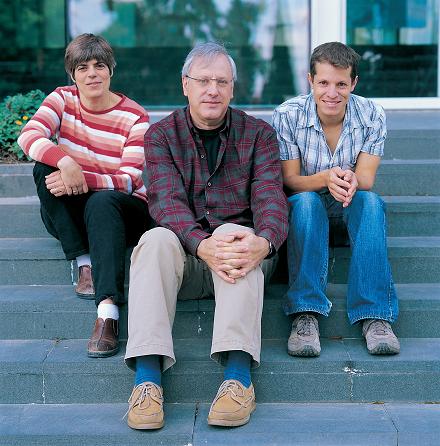At the Weizmann Institute they were able to explain what happened in an experiment 80 years ago with a salamander embryo and which laid the foundations for research in the field of embryonic development

About 80 years ago, the German scientist Hans Schaffman performed an experiment that laid the foundations for research in the field of embryonic development. He crossed a salamander embryo, and noticed that the half of the embryo that contains the belly side (ventral) degenerates, while the half of the embryo that contains the dorsal side (dorsal) manages to complete the missing half, creating an embryo that is smaller than normal, but it contains all the essential components, in a correct quantitative ratio. In a follow-up experiment, he took several cells from the dorsal half of the embryo (back side) and transplanted them into the ventral side (belly side). To his surprise, this resulted in the development of two Siamese twin embryos, small but perfect, containing all the essential elements in the correct quantitative ratio. For this work, Schaffman won the Nobel Prize in Medicine and Physiology for 1935. But how does this happen? How does one half of an embryo manage to complete itself while the other half degenerates? How does he maintain the correct relative size between his organs?
Various studies carried out in the past have shown that the processes of differentiation and development of the various organs in the embryo are related to a group of substances called morphogens. These substances are formed in a certain place in the embryo, and are dispersed along it in varying concentrations, where the concentration of the morphogen dictates the identity and nature of the different parts of the embryo. The scientists realized that the embryonic cells exposed to varying concentrations of the morphogens develop into the necessary tissues and organs. But how are the morphogens distributed throughout the embryo, to maintain the correct relative size between the developing tissues? These questions remained unanswered for decades, until recently - about 80 years after Shefman's classic and seminal experiment - they were solved in a study carried out by Prof. Naama Barkai, Prof. Benny Shilo and research student Dani Ben-Zvi from the Department of Molecular Genetics at the Weizmann Institute of Science, together with Prof. Avraham Feinsud from the School of Medicine of the Hebrew University and "Hadassa" in Jerusalem.
The current research began when Prof. Naama Barkai from the Weizmann Institute, a physicist who chose to engage in research in the field of life sciences, used the physical tools at her disposal. Together with her research partners, she created an action model based on complex interrelationships in networks of genes, and describes the expression of genes (production of proteins) in the different areas of the embryo,
So that on the ventral side of the embryo (abdominal side) all the morphogens necessary for the development of all the organs of the embryo will be found, which is not present on the dorsal side (back side). According to this model, a certain substance (morphogen), which plays a key role in the development of the embryo, is transported to different areas of the embryo by an inhibitory substance that functions as a kind of "shuttle", and controls the degree of activity of the substance it transports. Experiments performed on frog embryos confirmed the findings of this model.
The morphogens and their mechanism of action, which determine the development of the embryo in the axis connecting the abdomen and the back, are preserved throughout evolution so that their versions are found in different animals, from worms to flies to humans. In the present study, another mechanism was discovered, which allows vertebrate animals to maintain the correct relative size of organs that develop in this axis. Thus, as we know, there are significant differences between the length of the arms or legs of tall and short people, but the ratio between the hand and the leg of that person is constant.
Understanding the development processes of fetal cells, and the mechanisms that direct the development of tissues and organs, could lead, in the future, to the development of advanced medical methods that could possibly help to repair damaged tissues and organs.
